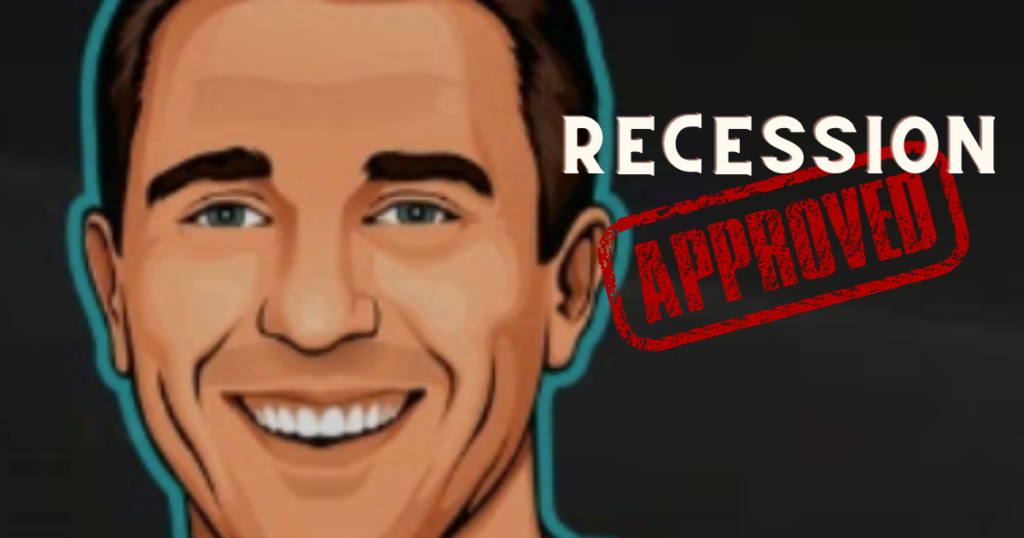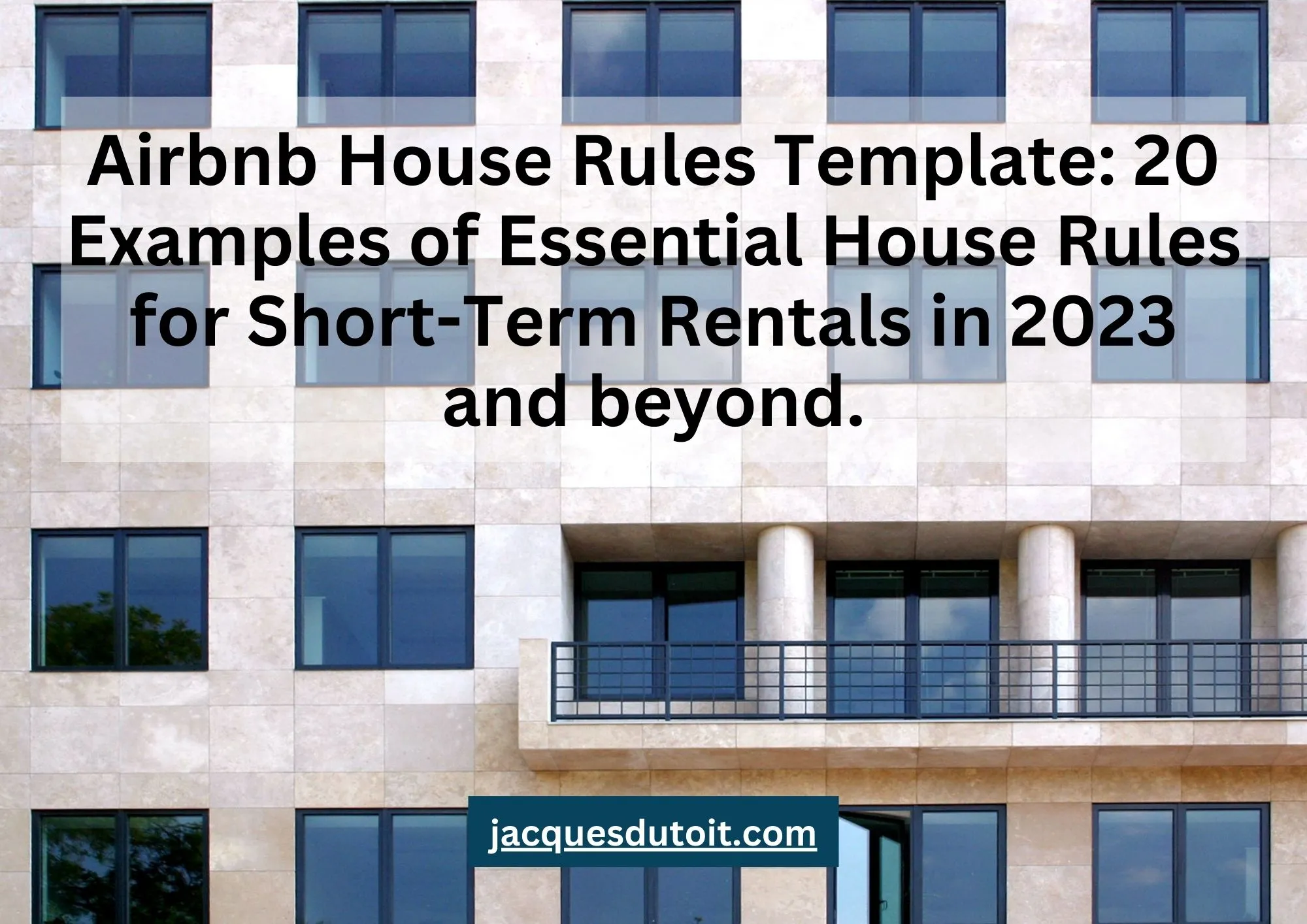Everyone knows that pain is coming. The recent collapse of a few major banks, along with their subsequent bailouts, are signals that the system is feeling the shock of the Fed’s attempt to bring inflation under control.
Anthony ”Pomp” Pompliano released a video on his Youtube channel today that I found insightful and I wanted to share that with you here today. I’ve formatted the transcript of his video in italics below. I also posted the link to the original video below that, if you prefer to watch it instead (or watch/listen while you read it).
Enjoy.
Enter Pomp:
Video transcript: The 2023 Financial Crisis Is Here. Do THIS Now.
Hey guys, what’s going on? I believe that we are in a major financial crisis in the United States economy, and I keep getting phone calls, text messages, and emails from friends and family asking me what is going on. I thought the best way for me to answer that question would be to sit down and record one single video so that I could share it with those people, but also all of you could learn as well.
In order to understand the financial crisis that is underway today, we must go back about three years to understand how we got here. If we go all the way back to January 2020, during that time period, COVID was just a thing in international markets. In the United States, the economy was pretty healthy. We had inflation under two percent, historically low unemployment, and all seemed good in the world.
As COVID came to the US, and we started to see cases first on the west coast and then eventually in New York, and then ultimately we got the lockdowns that were mandated by the government. The velocity of money in the US economy came to a screeching halt. When that velocity of money came to a halt, investors and consumers got spooked. They were locked in their homes, and they didn’t know what to do. So naturally, they wanted US Dollars. There was a flight to safety, and in order to get dollars, they sold every investment asset they possibly could. They literally went into their Investment Portfolio, and if there was a stock price or there was a liquid market, that asset was being sold. They dumped stocks, they dumped gold, they dumped Bitcoin and cryptocurrencies, anything that they could sell, they wanted dollars. During these types of liquidity crises, asset prices fall aggressively, and correlations between assets trend towards one, and that’s exactly what we got in March of 2020.
During that time period, the central bank and the government had a choice to make. They could simply allow the free market to take hold and try to correct the market mistakes, or they could step in and intervene, and that’s exactly what they did. When the government and the central bank stepped in, they went and conducted one of the greatest monetary experiments in human history. They stepped in with trillions and trillions of dollars, both combining monetary policy and fiscal policy. They reduced the interest rate artificially capped at zero percent through two emergency rate cuts, and they pumped so much liquidity into the market that literally, the market didn’t know what to do with it.
We were handing out twelve hundred dollar checks directly to citizens, we were extending bailouts to airlines and other industries, and it seemed like money was just sloshing around the system. Now at the time, I was incredibly vocal that you would not be able to suppress interest rates and print trillions of dollars without getting high inflation. There was definitely a debate, and there were other people on the other side of that argument, but as we know, going into the end of the year, there were people placing wagers of trillions of dollars on whether inflation would come or not.
Now of course, as we got into 2021, we saw inflation start to tick up. In the summer of 2021, a little over a year after all of that monetary experimentation started, we got inflation coming in at over five percent on the official CPI measurement. From there, we saw inflation continue to tick up from five percent until it eventually topped out at nine percent.
That is a massive increase in the inflation rate in under two years. Now of course, when inflation went up over five percent, we continued to hear from the Fed, the Treasury, and other leaders and organizations that inflation is transitory. “Don’t worry,” they said, “it’s going to spike up, but it will come back down quickly.”
Of course, with the benefit of hindsight, we know that inflation, after it went over five percent, has never gone back under five percent, and we are almost two years later today. During this period, as inflation continued to ride higher, it felt amazing. The market was drunk, people were getting richer, the stock market was going up, Bitcoin and cryptocurrencies were going up, real estate was going up, commodity prices were going up – everyone felt like it was amazing.
And the richer that your investment portfolio got, the more that you encouraged the FED to continue to ease monetary policy and to have trillions and trillions of dollars pumped into the economy. Individual incentives took over.
But of course, only half of Americans actually have investment assets. The bottom 10 percent of Americans hold no investable assets and instead, they keep 90 percent of their net worth in cash. And when there is a high inflation environment like what we saw, their savings are being eroded away at a historic pace.
And so we got this great divide, this great bifurcation in the citizens of America. The wealthy continued to get wealthier, and those who were not wealthy continue to be pushed into a more dire financial position.
Of course, as every great party must end, the Fed eventually realized the error of their ways. They started in November and December of 2021, talking about contracting the monetary policy and actually moving towards quantitative tightening and moving away from quantitative easing. This started with interest rate hikes in Q1 of 2022, and we have seen the Federal Reserve go from a zero interest rate environment to 4.5 percent in a little over one year.
Now of course, they not only were moving interest rates higher, they also started to conduct a quantitative tightening and move about a trillion dollars off of their balance sheet. Now the problem is that even though the FED jacked up interest rates from zero to 4.5 percent, and they dumped one trillion dollars off their balance sheet, they were never able to get inflation lower than the six percent that we are experiencing today.
Now, as this occurred, we must also understand what simultaneously was happening in terms of individuals, businesses, and banks. All of that money that got injected into the economy, it had to go somewhere. And so, other individuals tried to save it and put it in the bank, whether they used it to consume goods and services and gave it to businesses who then put it into the bank, or even venture capital funds and tech startups who also took money that was flowing into their industry and put it in the bank.
The deposits in these banks drastically increased. If you look at somebody like Silicon Valley Bank, they went from about $60 billion dollars in deposits to almost $190 billion dollars during this era. Now of course, if you’re a bank and you’re receiving this drastic influx of deposits, you have to ask yourself, what do we do with it?
Well, the bank as you know is part of the fractional Reserve System. They don’t simply hold the one dollar you gave them as one dollar on their balance sheet. They lend out the dollars and they buy assets. They are trying to drive a financial return for their shareholders, and so that’s exactly what the banks did.
But banks tried to be risk-averse. They try not to buy assets that have a risk profile that would increase the odds of them losing depositors money. Some of that is due to regulation, some of that is due to best practices, and some of that is due to the idea of being around fifty or one hundred years from now. But what those assets ended up being were not what the banks thought they were buying.
Many of the banks went and they bought two different types of assets. They either bought U.S treasuries or they bought mortgage-backed securities. Now at the time that deposits were flowing into the banks, the banks ended up saying to themselves, “We are in a zero-interest-rate environment. I need to earn more than zero percent.” And so they went and they bought long-duration bonds. In many cases, like at Silicon Valley Bank, those long-duration bonds were something like a ten-year bond that was yielding about 1.5 percent. If you’re in a zero percent interest rate and you can earn 1.5 percent, that’s pretty good.
The problem is at the time that the Federal Reserve was telling everyone, and they were giving forward guidance that interest rates were going to stay under one percent, about half a percent for years to come. Now of course, when the banks bought these assets, they believed the Federal Reserve. As the environment changed and the Federal Reserve changed their mind, which they’re 100% allowed to do, the banks were exposed. They were holding these long-duration bonds that were earning only 1.5 percent. And so when the FED jacked up interest rates at the fastest pace in history, those bonds now traded at less than what they were bought for. Imagine if you put a hundred dollars into a ten-year Treasury and now it was only trading for seventy or eighty dollars. That means that you have an unrealized loss. And so the bank was doing this with tens of billions of dollars. That’s fine. Usually, you can simply hold the bond until it becomes mature at that ten-year period. And you not only will recoup 100% of your principal, but you also will recoup the interest that is promised to you.
So historically, banks, if they have unrealized losses, just hold the bond to maturity. The problem is that if everyone shows up to the bank and says, “I want my money back,” then the bank is forced to sell the bonds on their balance sheet and crystallize those losses. That is a major problem, but that is exactly what happened at Silicon Valley Bank.
But the big story here is that this is not just a Silicon Valley Bank story. This is the entire banking system. US banks have hundreds of billions of dollars of unrealized losses on their balance sheet. They don’t have to mark these assets mark-to-market, and they are able to actually just hold them to maturity unless a ton of depositors show up and say, “Give me back my money.”
Now, as we saw a bank run at Silicon Valley Bank and some of the other regional banks came under stress for a similar situation, the government, the FDIC, the Federal Reserve, and other organizations had to make a decision. They had to decide, are we going to step in and provide liquidity to these banks? Are we going to backstop the banks so that the individual depositors don’t run in fear and try to withdraw all their money?
That is exactly what they did. They have now stepped in. The government, the Fed, and others have said we will not allow a banking crisis to occur on our watch. We will backstop these banks. The problem when they do that is that they have to find the money somewhere. The initial amount of money that is being given to the banks is coming out of an insurance fund that the banks have been paying into since 2008. Think of this as the banks basically creating a rainy day fund for this type of situation. The problem is that that rainy day fund is not big enough to actually go ahead and protect all of the deposits at every bank. And so, naturally, the Fed has had to step in and offer all sorts of lines of credit to these banks. We just got word that last week the Federal Reserve increased their balance sheet by nearly $300 billion. The reason why this is important is that for a year, the Fed has been contracting the balance sheet. Remember, I said the Fed took one trillion dollars off their balance sheet over the last 12 months. So now we have a pivot in the Fed’s balance sheet strategy. And that $300 billion increase means that the Fed is now placed in an impossible situation. There is a lose-lose scenario in front of us. If the Federal Reserve continues conducting quantitative tightening, they continue to hike interest rates, and they continue to sell assets off of their balance sheet, it is very likely that we will spiral into a major banking crisis in the United States of America.
I personally do not believe that the FDIC, the OCC, the Federal Reserve, and other organizations will allow that to occur. That’s a good thing. But what that means is that the Fed and others are going to have to step in with looser monetary policy.
If they did all of this work and they were unable to get inflation under 6% in the official CPI metrics, and from January to March of 2023, we’ve actually seen inflation re-accelerating and not decelerating as they want. And now the Fed has to return to that loose monetary policy. It is very likely that we will see a high inflation environment go higher and stick around for much longer than people previously thought.
Now the problem with this is that the average American is going to be drastically hurt by this. Go back to that scenario where 50% of American citizens do not have any investable assets. That means they are going to continue to see their savings eroded away. We also know that for the last 23 months, there has been negative wage growth in the United States of America. This means that although you may be making more money in aggregate terms, you may be receiving some sort of bonus or some sort of raise, you actually are losing purchasing power month over month over month. And what that means is that you are in a worse financial position in purchasing power terms than you were two years ago.
This is absolutely a disaster situation for the average American family.
We are talking about a situation where the cost of food at home is up over 10 percent in the last 12 months. But now that the Fed is being forced to save the banking system, they step in with lots of liquidity and now have to hedge with loose monetary policy, we are likely to see that inflation come roaring back. I don’t have a crystal ball. I don’t know how high inflation can go, nor do I know how long inflation can last. But what I do know is that there is a major financial crisis occurring now. A lot of attention has been directed towards Silvergate Bank, Silicon Valley Bank, and Signature Bank. But I must call out those three banks, which are easy for politicians and others to say are crypto or tech-related, are not the only banks that have come under stress.
Just recently, we heard that First Republic Bank is going to receive 30 billion dollars of deposits from 11 other banks. Your competitors do not put 30 billion dollars in deposits in your bank unless there is a major crisis at hand. On top of that, Credit Suisse has come under immense stress as well, and the Swiss National Bank has stepped in with tens of billions of dollars of liquidity to shore up the balance sheet of that bank as well.
As a friend recently told me, there are many bodies that continue to float to the surface, and usually, that means that alarm sirens are going off. Now, I don’t want to fearmonger, and I don’t want you to panic. Instead, what I want you to do is take the time to learn about what is happening, to understand how we got into this situation, and to be crystal clear on what is happening right now. The more educated you are, the better suited you are to make sound decisions as we move forward.
Of course, many of you, as you learn about the current situation and how we got here, will start to ask, “What should I do? What are the alternatives? What are other smart people doing?” I can’t give you financial advice, but what I can tell you is how other people I see and speak to are responding.
Most people in the traditional financial world are either one, ignoring the crisis and completely saying, “No, that’s not true. That’s not happening.” It’s a fair point of view. I disagree, but that’s how markets get made. There’s another cohort of people in the traditional financial world that are buying equities and other types of high-risk assets that they believe have the ability to go higher when there’s loose monetary policy. And then, of course, there are individuals who say, “I don’t want to be in equities during this type of environment,” and so instead, I’m gonna buy gold or foreign currencies.
Those all may or may not be good decisions. I’ll leave it up to them to decide what works for them, their strategy, and their portfolio. But I personally believe that that’s not the right thing for me.
Instead, as I have been saying for years, I believe that Bitcoin will be the big winner and it will receive global adoption during a time period like we are experiencing. As we have seen to start this year, Bitcoin is up about 60% year to date. It is up over 300% since the start of 2020. The reason being is that Bitcoin actually serves as an amazing inflation hedge. That was a narrative that was shared in 2020 and 2021. There are a lot of people during 2022 that said Bitcoin is not an inflation hedge, we have high inflation, but see Bitcoin is crashing.
What they missed in their analysis is that markets are forward-looking. They do not actually move based on past data. When inflation was still relatively low in 2020 and in the beginning of 2021, Bitcoin was going higher. It moved from eight to ten thousand to about sixty thousand dollars in March of 2021. That is a 600% increase in the price of the asset. The reason is because the people who are buying Bitcoin believed that inflation was coming, not that it was already here. The assets move before the inflation hits. People do not wait for high inflation to occur before they move their assets. And so Bitcoin served as a perfect inflation hedge during the 2020 and 2021 period.
Now, as the Fed towards the end of 2021 and into 2022 first talked about and then began conducting tighter monetary policy and tighter financial conditions, people said the Fed is going to destroy demand and they are going to try to bring inflation down again. Markets are forward-looking, so people sold Bitcoin and other inflation hedge assets and moved their financial assets into treasuries or other types of financial instruments.
As we have watched the last three months transpire, Bitcoin has moved up 60%. I personally believe Bitcoin is going higher because people are now seeing inflation is not going to go down back to 2%. We are going to live in a persistent high inflation environment, and there is currency debasement that is going to have to be pursued by the Fed and other organizations in order to quell the banking crisis and other cracks in the financial system.
When people start to understand that, they go and they move into those inflation hedge assets once again. And so, if markets are forward-looking, you can think of Bitcoin as an alarm system. When it moves higher at this rate in this short period of time, the market is giving us a signal. It is telling us that more and more people believe high inflation is here to stay, and we may be moving higher, and currency debasement odds are increasing drastically.
I don’t know if Bitcoin is a good asset for your specific portfolio. I have no clue what your financial goals are, what your risk appetite is, nor what’s your level of education on whether it’s Bitcoin, bonds, equities, real estate, or something else. What I can tell you is that a key theme of the 21st century is self-reliance. You must do the work, you must educate yourself, and you must take the time to learn both the nuances of the financial system, of various financial markets, how we got here, what’s going on right now, and where we are likely going. I can’t do that work for you, and neither can anyone else.
Self-reliance is important because if you do the work, it gives you the ability to think independently and to think critically. Over the coming weeks, I believe that you are going to hear a lot of narratives. Some of them will be in alignment with each other, some of them will be competing narratives. Some of them will be shared by the central bank, by various Wall Street hedge funds, or even talking heads on television.
Who you listen to may be more important than what they actually say, but I actually believe the best way to find signal among all the noise is to be aware of all of the arguments, both the people you agree with and the people you disagree with. These are complex, uncertain times, and in order to make sure that you continue to seek truth, you must be aware of what everyone thinks because that is the only way that you can continue to check your thesis and continue to make sure that you don’t marry a single narrative and miss when the world changes.
A great sign of intelligence is to change your mind when you receive new information, but you can’t simply change your mind every time you hear someone new. You have to be able to sift through the differences. As Vladimir Lenin once said, “There are decades where nothing happens and then there are weeks where decades happen.” I believe we are in one of those time periods right now.
Over the last week, we have had two of the three largest banking failures in U.S. history occur. That is not a good start to this time period. The Federal Reserve, I do believe that they are trying the best they can. They have good intentions, they have just been put in an impossible situation. There is a lose-lose scenario in front of them. If they continue to quantitative tighten, there are major cracks that will be exposed in the financial system. If they move back to loose monetary policy, inflation will likely rip higher. I don’t envy the position they’re in, and I’m glad I’m not the one who has to make those decisions.
Again, I want to reiterate, I believe a major financial crisis is underway, but I don’t necessarily know what you as an individual should do. But I do want to call your attention to pay attention right now. Do the work to learn and make sure that you are prepared for various future scenarios because when we enter these complex, uncertain times, anything can happen. I hope this was helpful to all of you.
Pomp’s original video on youtube
Below you can find his original video on Youtube:








